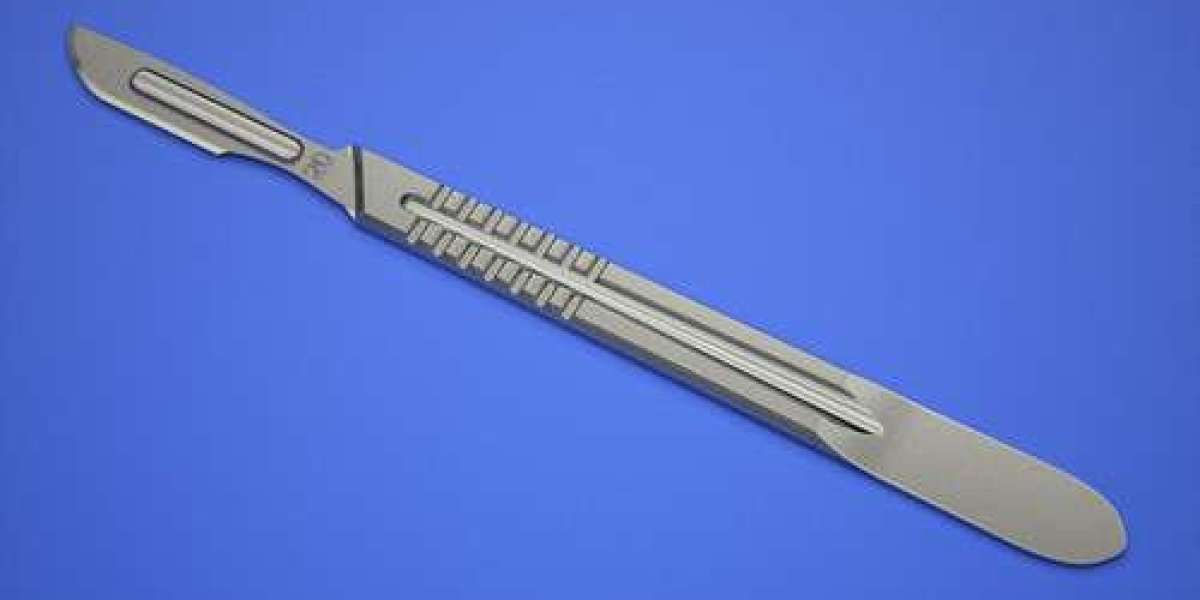Surgical blades are among the most fundamental tools in the operating room, enabling surgeons to perform precise incisions that are critical to successful surgical outcomes. These sharp, carefully engineered instruments are designed to handle various procedures, ranging from routine surgeries to complex and delicate operations. However, the effectiveness of surgical blades goes beyond just their sharpness—it also encompasses patient safety, precision, and the overall success of the surgery. The proper use of Surgical Blades can significantly impact a patient’s recovery, reduce complications, and ensure the integrity of the procedure.
In this article, we will explore the role of surgical blades in patient safety, the importance of precision in surgical practice, and the best practices for using and handling these vital tools to ensure optimal surgical outcomes.
The Importance of Surgical Blades in Modern Medicine
Surgical blades, also referred to as scalpels, are one of the oldest and most reliable instruments in a surgeon’s toolkit. These blades are specifically designed to perform accurate cuts with minimal damage to surrounding tissue. A well-designed surgical blade allows surgeons to make clean, smooth incisions, reducing the risk of infection, excessive bleeding, and tissue trauma.
With advancements in medical technology, surgical blades have evolved to meet the growing demands of modern surgical practices. They are now available in a wide variety of sizes, shapes, and materials, allowing surgeons to select the appropriate blade for each procedure. Precision and control are key when it comes to patient safety, and the right surgical blade can make all the difference in ensuring the best possible outcome.
Types of Surgical Blades and Their Uses
Choosing the correct type of surgical blade is essential for ensuring precision in surgical procedures. Different blades are designed for specific tasks, and selecting the wrong blade can compromise both the safety and efficiency of the operation. Below are some common types of surgical blades and their respective uses:
1. Blade No. 10
This blade has a curved edge and is widely used for making large incisions in soft tissues. It is commonly utilized in general surgeries, including abdominal surgeries and tissue dissections.
2. Blade No. 11
Characterized by its sharp, pointed tip, the No. 11 blade is ideal for creating stab incisions and is often used in procedures like laparoscopic surgery, cardiovascular surgery, and arthroscopic surgeries. Its pointed shape allows for precision in smaller, deeper areas.
3. Blade No. 15
The No. 15 blade is much smaller and curved, making it perfect for more delicate procedures such as ophthalmic surgeries, biopsies, and plastic surgery. It is designed for precise, short incisions, especially when working in tight or intricate spaces.
4. Blade No. 20
This blade is larger and more robust than the No. 10, and it is typically used for orthopedic procedures, including cutting through muscle and bone, or for performing amputations. It is designed for heavy-duty surgical tasks requiring strength and durability.
Ensuring Precision and Patient Safety in Surgery
Surgical precision is essential for patient safety, as any deviation from the intended incision can result in complications such as excessive bleeding, infection, or damage to vital tissues and organs. Several factors contribute to ensuring precision in surgery, including the selection of the appropriate surgical blade, the surgeon's skill, and adherence to safety protocols.
1. Proper Blade Selection
Selecting the right blade for a procedure is the first step in ensuring precision. Surgeons must take into account the nature of the surgery, the type of tissue being incised, and the specific area of the body being operated on. Using a blade that is too large, too small, or unsuitable for the procedure can lead to errors, including tissue damage and prolonged recovery times. Proper blade selection minimizes the risk of complications and helps ensure that the surgery is performed as efficiently and safely as possible.
2. Sharpness and Maintenance of Blades
A sharp blade is essential for making clean incisions that promote faster healing and reduce the risk of infection. Dull blades can lead to jagged cuts, which may cause more trauma to surrounding tissues, prolong the healing process, and increase the chances of postoperative complications. Using a blade that is not properly maintained can also require more force, potentially leading to surgical errors.
Sterile, single-use disposable blades are widely used in modern surgical practice to ensure optimal sharpness and hygiene. These blades come pre-sterilized and eliminate the need for sharpening or sterilizing reusable blades. However, for procedures requiring reusable blades, regular maintenance and sharpening are critical to ensuring that the blades remain in peak condition.
3. Precision in Cutting Technique
The surgeon’s cutting technique is one of the most important factors influencing the precision of a surgical incision. Surgeons must apply the correct amount of pressure and use smooth, controlled motions when making incisions. Sudden or forceful movements can result in deeper cuts or unintentional damage to nearby tissues. This is particularly crucial in delicate surgeries, such as neurosurgery or reconstructive procedures, where precision is vital to avoid damaging sensitive structures.
Surgeons undergo years of training to develop the skills necessary to handle surgical blades with precision. This training ensures that they can use the blade in the most effective way while minimizing risks to the patient.
4. Ergonomics and Blade Handling
Proper handling of surgical blades not only ensures precision but also prevents injury to both the patient and the surgeon. Ergonomic design of scalpel handles plays a significant role in giving surgeons better control and reducing fatigue during long procedures. Scalpel handles are designed to provide a comfortable grip, allowing surgeons to maneuver the blade with accuracy and confidence.
Proper blade handling also extends to the safe attachment and removal of blades. Many medical institutions use blade removal devices or forceps to ensure that medical personnel avoid direct contact with the blade, reducing the risk of accidental cuts and exposure to infectious material.
Best Practices for Surgical Blade Safety
Beyond ensuring precision in the cut, maintaining patient safety through best practices in blade handling and disposal is critical. Following these guidelines can help prevent accidents and improve overall surgical outcomes:
1. Strict Sterilization Procedures
All surgical instruments, including blades, must be sterilized before use to prevent infection. While most surgical blades are now disposable, any reusable components, such as scalpel handles, should be thoroughly sterilized between uses. Autoclaving is one of the most effective methods of sterilization, using high pressure and temperature to eliminate bacteria and viruses.
2. Safe Disposal of Blades
Used blades pose a serious safety risk to medical personnel if not disposed of correctly. Blades should be discarded in designated sharps containers immediately after use. These containers are designed to safely contain sharp instruments, reducing the risk of accidental injury and ensuring compliance with healthcare safety standards.
3. Minimizing Tissue Damage
Surgeons should always aim to minimize tissue trauma during incisions by using the smallest possible blade for the job and making the incision with precision. Reducing unnecessary trauma speeds up the patient’s healing process and reduces the risk of complications, such as infection or excessive scarring.
4. Training and Education
Ongoing training for surgical teams is essential for ensuring patient safety. Regular education on the latest techniques, tools, and safety protocols can help reduce errors in the operating room. Surgical teams should also be updated on new blade designs and innovations that improve precision and safety.
Conclusion
Surgical blades play a pivotal role in ensuring the success and safety of countless medical procedures. From their design and selection to their sharpness and handling, every aspect of these instruments impacts the outcome of the surgery and the patient’s recovery. Precision is key, and ensuring that the right blade is used in the right way can significantly reduce risks and improve healing.
By following best practices in blade handling, maintenance, and safety protocols, healthcare professionals can maximize the benefits of surgical blades, ensuring that every cut is as precise and safe as possible. In doing so, they uphold the highest standards of patient care and surgical excellence.








